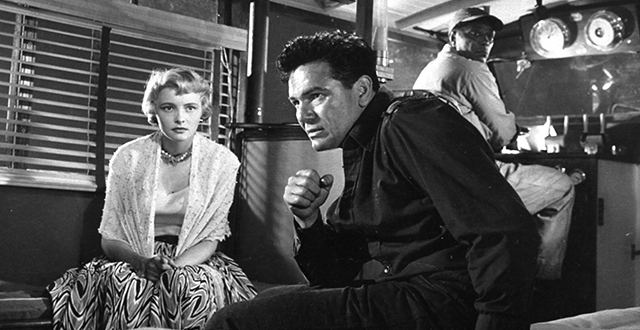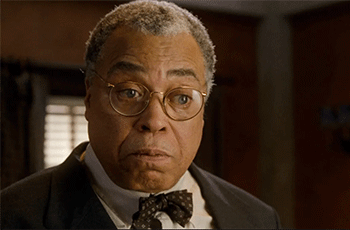
The Breaking Point Screens at L.A. Film Festival on Saturday
Susan King 06/20/2012"The Breaking Point” is one of those forgotten great films that you have probably never heard of, let alone seen. But over the last decade, the 1950 film noir based on Ernest Hemingway’s “To Have and Have Not” is getting the respect it so richly deserved. Last year, Warner Archive released the film on DVD, and Saturday afternoon the Los Angeles Film Festival will screen the recently restored print at REDCAT.
“I think it is the best adaptation of any of Hemingway’s works,” said film noir historian Alan K. Rode. “In fact, Hemingway told Patricia Neal, who was in the movie, that this was [his favorite] movie made of any of his books.”
Warner Bros, the studio that produced “The Breaking Point,” had scored a huge hit with its very loose 1944 adaptation of “To Have and Have Not,” which starred Humphrey Bogart and Lauren Bacall. The only thing that movie and Hemingway’s story of a married fishing boat captain on the ropes had in common was the title and the name of the lead character, Harry Morgan.
Directed by Howard Hawks, the fun and romantic “To Have and Have Not” involved Nazis, the French Resistance and a lot of quips between Bogart and Bacall, who married the following year.
“The Breaking Point,” said Rode, was the brainchild of writer Ranald MacDougall, who sold the idea of doing a more faithful adaptation of Hemingway's book to Warner Bros.’ producer Jerry Wald. The project also served as the return of actor John Garfield to Warner Bros.
Garfield had become a star at Warner Bros. in 1938 with “Four Daughters” and was one of the studio’s top talents until he left to form his own production company, which made one hit film, the 1947 classic boxing drama, “Body and Soul.” But his career was treading water after that.
“The Breaking Point” was to be his first film of a two-picture deal with the studio. And Oscar winner Michael Curtiz of “Casablanca” fame, who had directed Garfield in “Four Daughters” and other films, came on board. Neal played the femme fatale, Phyllis Thaxter was Garfield’s loving wife and Juano Hernandez played his co-worker and friend.
Harry Morgan is a hard-working fisherman for hire who can barely make ends meet. “I would call this a mid-life crisis noir," Rode said. “I think one of the reasons why the movie holds up, and why so many film noir movies hold up, is that people can identify with him. He is losing his boat. He loves his wife. He loves his children. But so often as we see in film noir, people get on that trolley car and they ride it to the end.
"Garfield gets involved with a very shady lawyer and in immigrant smuggling and much, much more. Pat Neal tempts Garfield and gets him right to the point he is going to get involved with her, but his innate character keeps calling him back. So much of it rings true.”
Warner Bros. planned to give “The Breaking Point” a huge buildup leading to its release in early October. But during the summer of that year, “Red Channels,” a pamphlet that named actors, writers, musicians, broadcast journalists and others who were considered Communist or had Communist leanings or knew “subversives,” came out.
Though he was not political, Garfield’s wife was, and his name was on the list.
"All the movie moguls were scared, and none were more scared ... of the hysterical atmosphere of anti-communism than Jack L. Warner," noted Rode. "He completely pulled the plug on the movie and put almost no money into promotion. The picture was released, got good reviews and it was absolutely buried. Garfield’s contract for another picture was canceled by Jack Warner.”
Garfield would make one more picture, 1951’s “He Ran All the Way,” before he died of a heart attack in 1952 at the age of 39.
Martin Scorsese’s the Film Foundation is sponsoring “The Breaking Point” at LAFF. Funding for the restoration was provided by Warner Bros. in association with the foundation and theHollywood Foreign Press Assn. UCLA Film & Television Archive did the preservation and restoration.
“One of the great things about preservation in general is if you have never seen a movie, it doesn’t matter if it’s 60 years old, it’s a new movie to you,” said Margaret Bodde, executive director of the Film Foundation. “So preservation is this wonderful resource for everyone discovering a film for the first time.”
Los Angeles Times